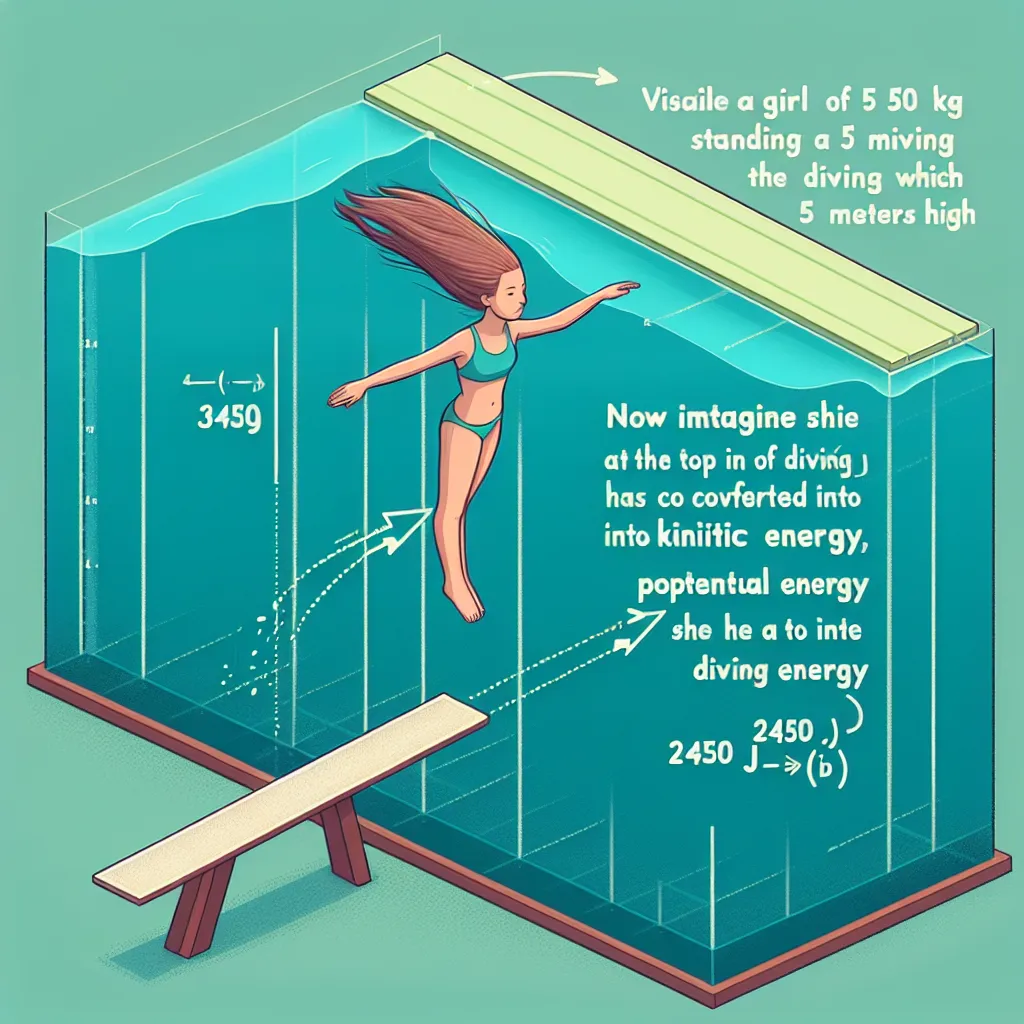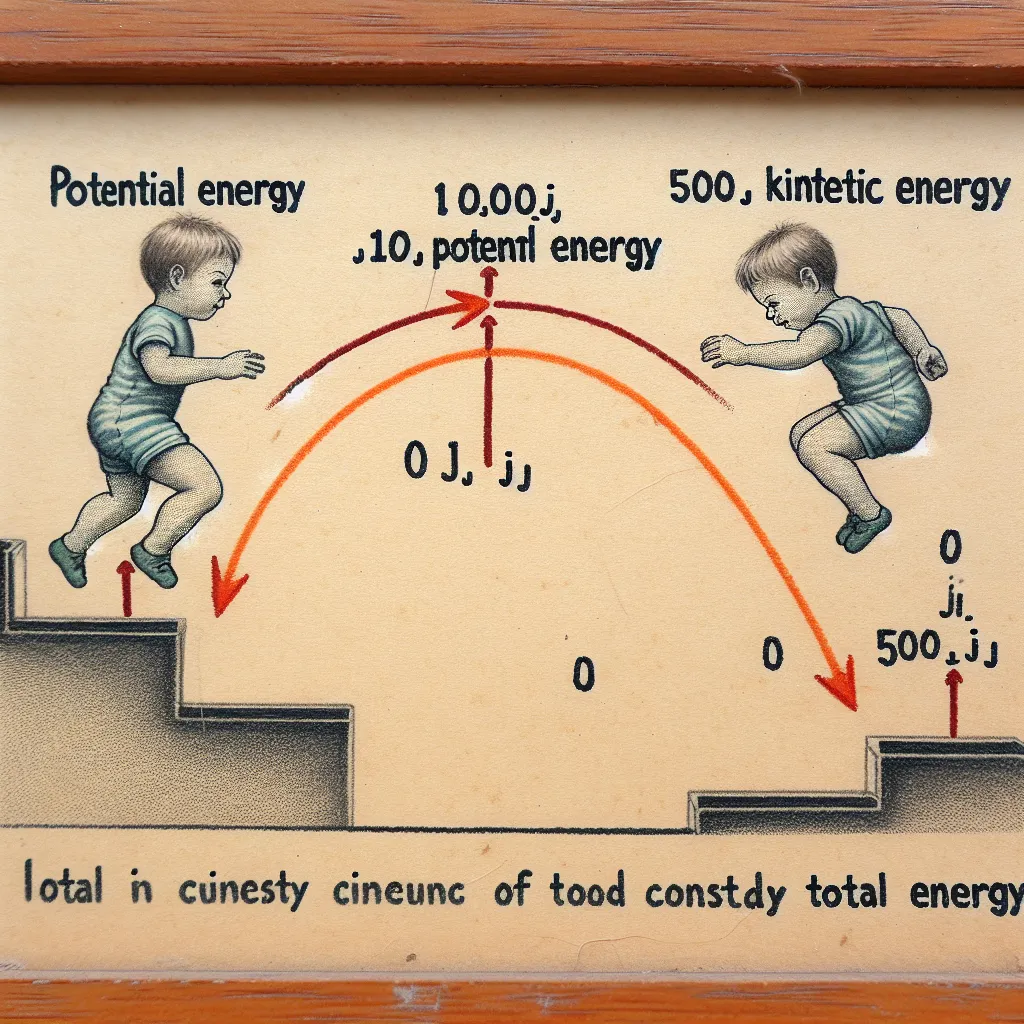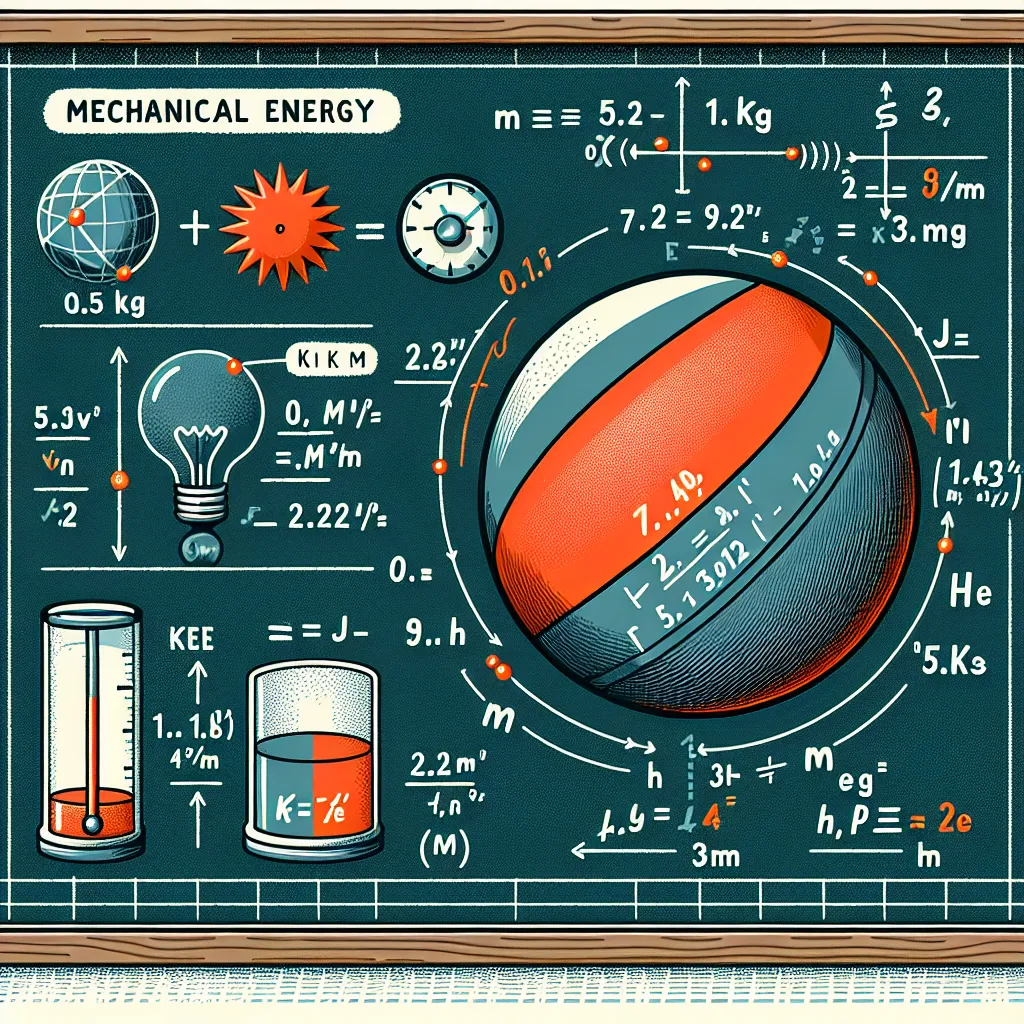Ask AI on The Internet
Question: A 100 Kg man is diving off a 50-meter cliff. What is his kinetic energy when he is 20 meters from the water? 10,000 J 19,600 J 29,400 J 49,000J
To determine the kinetic energy of the diver when he is 20 meters above the water, we need to consider the principles of energy conservation, specifically potential and kinetic energy. Initially, when the diver is at the top of the 50-meter cliff, all his energy is gravitational potential energy (assuming no initial kinetic energy). The potential energy (PE) at the top is given by: \[ PE = mgh \] where: \( m \) = mass (100 kg) \( g \) = gravitational acceleration (approximately 9.8 m/s²) \( h \) = height (50 meters) \[ PE_{\text{initial}} = 100 \times 9.8 \times 50 = 49,000 \, \text{J} \] As the diver falls and reaches 20 meters above the water, his potential energy decreases and is converted into kinetic energy (KE). The potential energy at 20 meters is: \[ PE_{\text{final}} = mgh = 100 \times 9.8 \times 20 = 19,600 \, \text{J} \] The loss in potential energy is converted into kinetic energy. The initial potential energy minus the final potential energy gives us the kinetic energy at 20 meters: \[ KE = PE_{\text{initial}} - PE_{\text{final}} \] \[ KE = 49,000 \, \text{J} - 19,600 \, \text{J} = 29,400 \, \text{J} \] Therefore, the correct answer is: \[ \boxed{29,400 \, \text{J}} \]
Think your answer is better than the AI's? Post it below.
Other Most Relevant Posts:
 Ask AI: A 100 Kg man is diving off a 50-meter cliff. What is his kinetic energy when he is 20 meters from the water?
Ask AI: A 100 Kg man is diving off a 50-meter cliff. What is his kinetic energy when he is 20 meters from the water?
Question Tags
If you want your question answered by an AI, click here.
![To find the kinetic energy (KE) of the man when he is 20 meters from the water, we can use the formula for gravitational potential energy (PE) lost as he falls and the kinetic energy gained.
1. Calculate the potential energy at 50 meters (top of the cliff):
\[
PE = mgh
\]
where:
- \( m = 100 \) kg (mass of the man)
- \( g = 9.81 \) m/s² (acceleration due to gravity)
- \( h = 50 \) m (initial height)
\[
PE = 100 \times 9.81 \times 50 = 49050 \text{ J}
\]
2. Calcul](https://theinternetioimages-f2htc2ggcrath6d7.z01.azurefd.net/$web/askai/2e8a199e-8415-4e86-96cf-34dae86f9af5.webp)





Post your own comment: